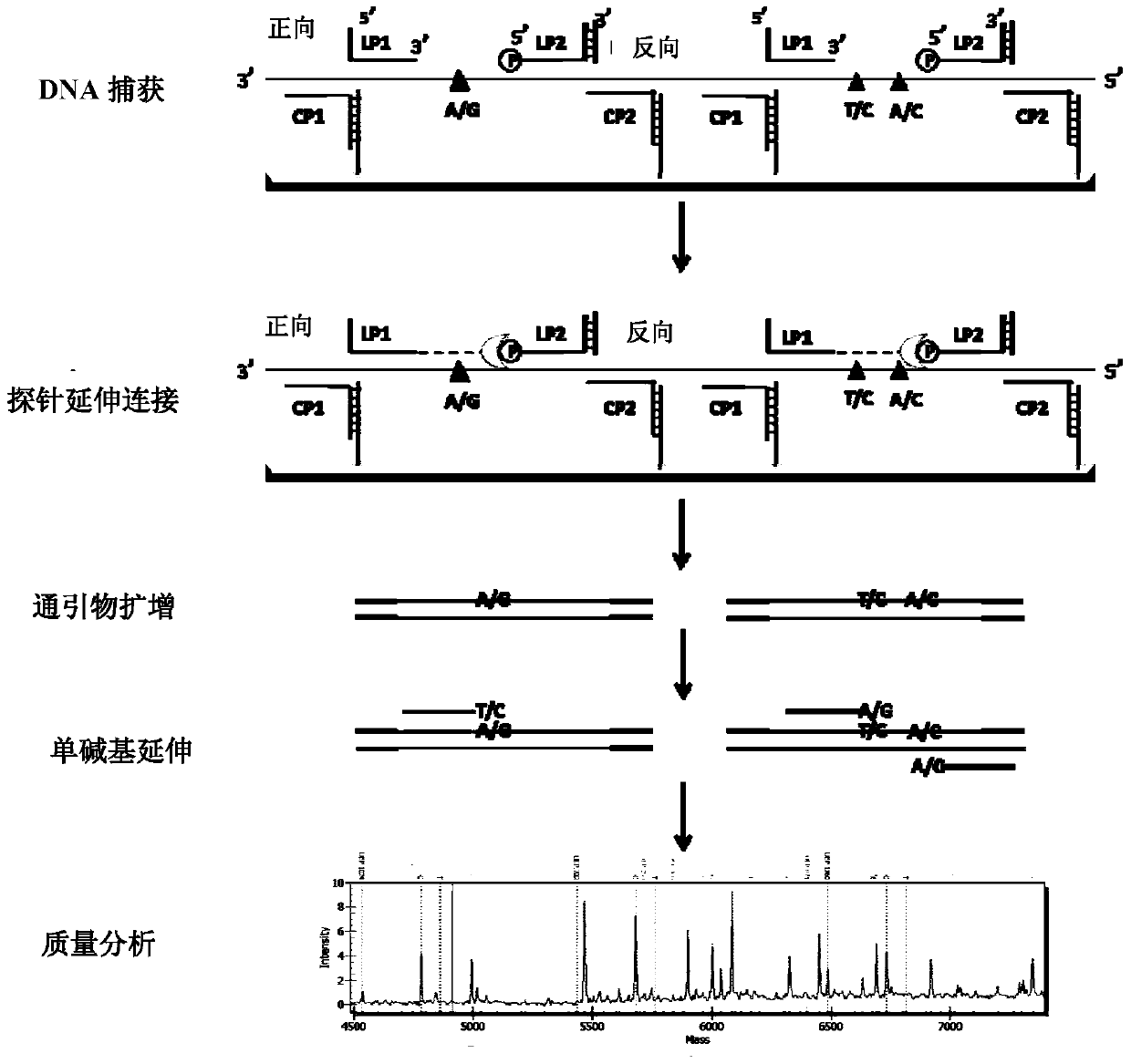A probe amplification method based on multiple extension ligation, its use and kit
A technology for linking probes and capturing probes, which is applied in the field of detecting the SNP of the glucose-6-phosphate dehydrogenase gene, and can solve problems such as long detection time, incomplete enzyme digestion, and heavy workload
- Summary
- Abstract
- Description
- Claims
- Application Information
AI Technical Summary
Problems solved by technology
Method used
Image
Examples
Embodiment Construction
[0052]In the following embodiments, the inventors disclosed 23 point mutations in the G6PD gene detected using the MELPA detection technology established in this study (see Table 1 above), and compared them with the iPLEX method and the direct sequencing method.
[0053] 1. The principle of MELPA technology and its application to detect 23 G6PD genotypes
[0054] Principle of MELPA technology
[0055] The principle of MELPA technology is to design a set of capture probe (capture probe, CP) and ligation probe (ligation probe, LP) near the detection gene target site (or SNP site), after lysing the blood sample or DBS sample, directly inject Genomic DNA is captured in the wells of the solid-phase plate, and then multiple probe extension and ligation reactions are performed. The analytes generated are tagged with universal primers, and then equivalent PCR amplification is performed by universal primers (universal primers, UP). The target fragment was obtained by increasing, and t...
PUM
 Login to View More
Login to View More Abstract
Description
Claims
Application Information
 Login to View More
Login to View More - R&D
- Intellectual Property
- Life Sciences
- Materials
- Tech Scout
- Unparalleled Data Quality
- Higher Quality Content
- 60% Fewer Hallucinations
Browse by: Latest US Patents, China's latest patents, Technical Efficacy Thesaurus, Application Domain, Technology Topic, Popular Technical Reports.
© 2025 PatSnap. All rights reserved.Legal|Privacy policy|Modern Slavery Act Transparency Statement|Sitemap|About US| Contact US: help@patsnap.com



